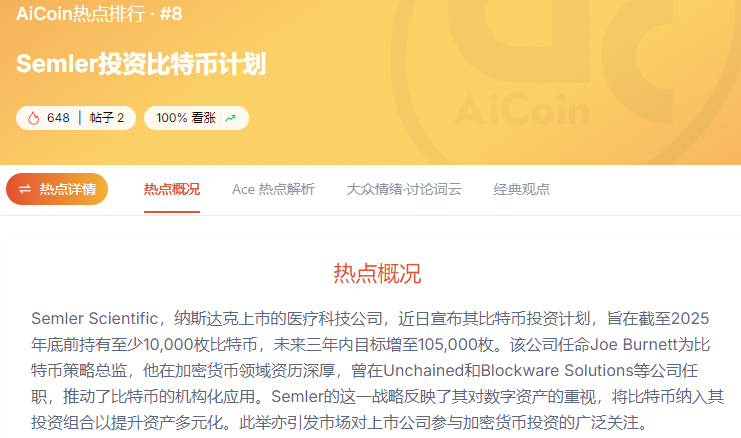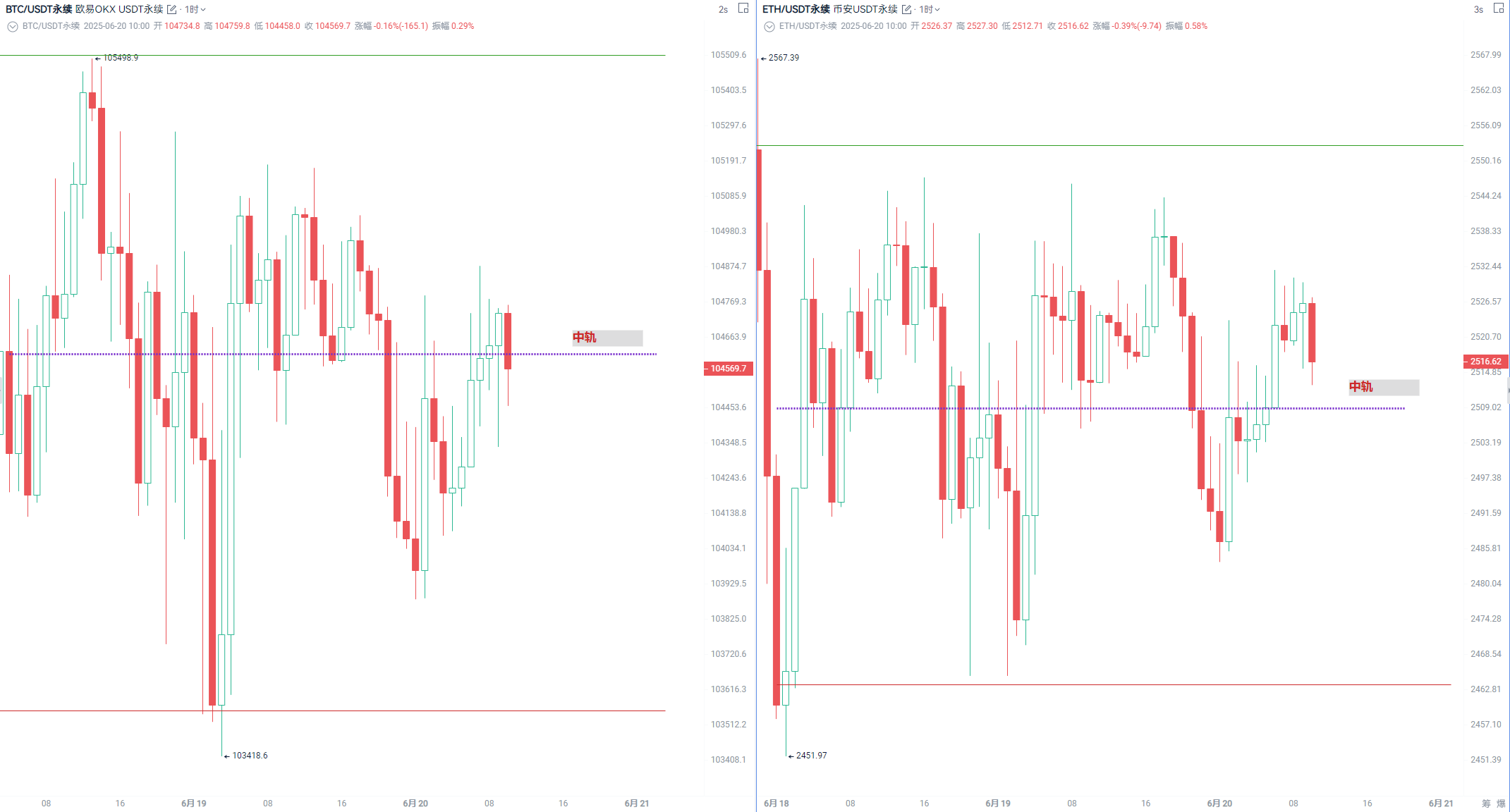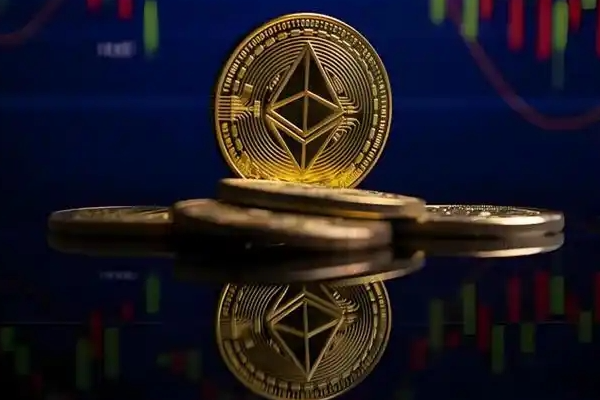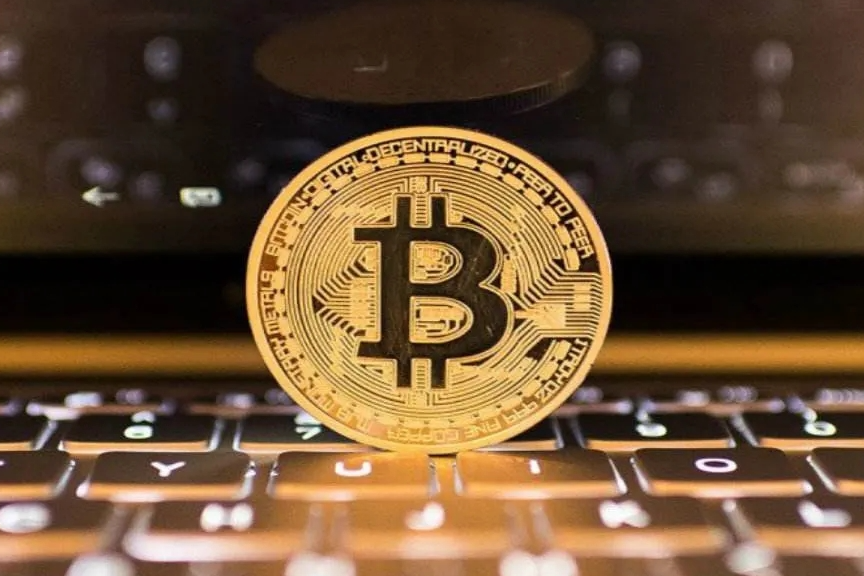Institutional funds are flooding in, while BTC/ETH remains stagnant like a mountain. Is this the main force building momentum? Or is it that the good news has all been released? The Chaos Index has already provided an answer: this is not a trend, but a fluctuation. So how should we act?
Frequent Good News, Yet the Market is "Steady as a Rock"?
Let's take a look at today's hot news:
- BTC ETF saw a net inflow of 2,761 BTC in a single day
- ETH ETF had a net inflow of 2,413 ETH
- The main trading volume exceeded 200 million USD
- Semler Scientific plans to hold over 100,000 BTC


From any perspective, the market is "blowing warm winds": whether it's the inflow of ETF funds or the allocation of BTC by listed companies, the overall logic points to one keyword—bullish expectations.

However, the price feedback is as follows: BTC is still fluctuating around 104,600 USD, while ETH is stagnant around 2,520 USD. The Chaos Index remains above 60, with a clear high-level fluctuation range.
Friends familiar with our previous article will know that a high Chaos Index indicates the market is operating within a fluctuation range. This means that good news does not equal a breakout; the current market is still in a "consolidation phase." In other words, the market does not want to rise, but "everyone is waiting": waiting for the Federal Reserve to signal? Waiting for data confirmation? Waiting for Bitcoin ETFs to show explosive curves?
But waiting aside, the necessary short-term rhythm is still there—this is also the key point we want to discuss today.
If you are not familiar with the Chaos Index, you can check out this article: “Interest Rates Not Dropping, Crypto Stagnating? The Chaos Index Teaches You to See Through the 'Logic Behind the Stagnation'”
The "Boring" Consolidation Period is Actually the Exclusive Battlefield for "Smart Money"
The characteristic of a fluctuation period is: direction is unclear, but volatility is not low. Don't be fooled by the visual effect of "moving sideways"; in fact, small fluctuations during the day are still enough to "make a profit." Let's break down the recent 1-hour K-line status of BTC/ETH.
Price behavior characteristics:
- Large swings through the midline but quickly retreating, showing repeated "highs and lows"
- Strictly confined to the upper and lower boundary range

Combined with the analysis of large orders, this actually indicates that institutions are not in a hurry to raise prices, but there are defenders at the bottom and pressure at the top, with both bulls and bears in a "balanced state."

This phase is actually the most suitable window for neutral strategies to perform, such as "Bollinger Bands," "Keltner Channels," and other mean-reversion strategies.
How to Execute the Strategy? Use the Chaos Index to Identify the Phase and Mean Strategies for Execution
Let's set up a simple strategy framework with the following logic:
- Screening Phase: First, use the Chaos Index to determine if the market is "moving sideways," setting a filtering threshold: only when the CI (Chaos Index) is above 55 do we activate the strategy, avoiding being "slapped back" during trend breakouts.
- Entry Conditions: After entering the fluctuation phase, we will ambush at the "upper" and "lower" bands of the Bollinger Bands. If the price hits the upper band, consider shorting; if the price touches the lower band, consider going long.
- Exit Conditions: Close the position when the price returns to the midline, capturing the "middle profit"; if the midline is not hit, exit with a 2% profit; or if the price moves against us, stop loss at 1.2%. Another "insurance line": if the Chaos Index drops below 55, indicating a change in market structure, exit directly regardless of profit or loss.
With this set of combinations, we do not seek huge profits, but rather clarity in logic and controllable risks, making it very suitable for "picking up small profits" in a fluctuating market. In simpler terms: "Once we see the market is 'moving sideways,' we wait at the edge of the range; if the price breaks through, we enter; if it comes back, we exit."
To visually verify whether this strategy is "reliable," I also utilized AiCoin's custom indicator feature to display trading signals directly on the BTC and ETH K-line charts.


What were the results? To be honest, surprisingly "clean"!
When the Chaos Index is above 50 and the market is clearly in a fluctuation structure, the signals are indeed very accurate: go long when it's time to go long, and reverse when it's time to reverse. Even better—once entering a trend segment, the strategy automatically "goes quiet," providing no signals at all.
This leads us to envision a more complete model logic: if we can first use the Chaos Index to distinguish between fluctuation segments and trend segments, and then apply different trading strategies accordingly—could we "capture every segment of the market" and calmly respond to an uncertain market?
Of course, the fluctuation strategy presented today is still a relatively basic model. I have not run a complete backtest or made real-time adjustments, so it is for reference only. If you are also interested, feel free to try it yourself—download AiCoin (https://www.aicoin.com/zh-Hans/features), replicate this strategy model, and adjust the parameters flexibly according to your trading rhythm.
Conclusion
Don't be fooled by the "calm appearance" of the market. Real market movements are never driven by passion but by structural construction. Today, we used the Chaos Index + mean strategies to tackle the operations in the fluctuation segment, making stagnation no longer a "waiting period," but rather a "steady earning period." Of course, the market will eventually move again. When the Chaos Index falls from a high position and the market re-enters a trend phase, we will need to switch to another set of strategies.
If there is an opportunity later, perhaps we can discuss—how to determine when a trend segment arrives? What strategies to use to capture the entire trend?
免责声明:本文章仅代表作者个人观点,不代表本平台的立场和观点。本文章仅供信息分享,不构成对任何人的任何投资建议。用户与作者之间的任何争议,与本平台无关。如网页中刊载的文章或图片涉及侵权,请提供相关的权利证明和身份证明发送邮件到support@aicoin.com,本平台相关工作人员将会进行核查。




